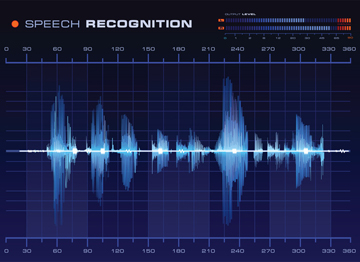This is an update on the January 8, 2014 blog “Advantages and Disadvantages Of Using Speech Recognition Software For Medical Transcription“
 Speech recognition (SR) or voice recognition has had a deep impact in the field of healthcare, with the HIMSS identifying SR as an aggressively expanding market with a 20% growth rate per year. Using this technology for medical transcription has been extensively explored since the 1980s. BCC Research shows that the world market for SR is set to increase from $104.4 billion in 2016 to $184.9 billion in 2021. It helps to identify words in spoken language and convert them into a machine-readable format. Though this technology comes with advantages, there are disadvantages too which make some providers to continue relying on medical transcription outsourcing to complete their documentation tasks. However, SR technology has evolved for the better and now they have modules dedicated to medical documentation. This has in turn inspired many hospitals to use medical transcription software technology to input patient information.
Speech recognition (SR) or voice recognition has had a deep impact in the field of healthcare, with the HIMSS identifying SR as an aggressively expanding market with a 20% growth rate per year. Using this technology for medical transcription has been extensively explored since the 1980s. BCC Research shows that the world market for SR is set to increase from $104.4 billion in 2016 to $184.9 billion in 2021. It helps to identify words in spoken language and convert them into a machine-readable format. Though this technology comes with advantages, there are disadvantages too which make some providers to continue relying on medical transcription outsourcing to complete their documentation tasks. However, SR technology has evolved for the better and now they have modules dedicated to medical documentation. This has in turn inspired many hospitals to use medical transcription software technology to input patient information.
The front-end type of this technology is now actively used in hospitals to convert words into a text in real time, obviating the need for a transcriptionist. A KLAS survey reports that in spite of 50% physicians’ resistance to adopt the technology, 9 out of 10 hospitals plan to expand SR use.
The SR market is showing great growth in the future. Based on a report from Markets and Markets, the speech and voice recognition market that was valued at USD 5.15 Billion in 2016 is expected to reach USD 18.30 Billion by 2023, growing at a CAGR of 19.80%. The market growth will be driven by factors such as increased demand for speech-based biometric systems for multifactor authentication and growing impact of artificial intelligence (AI) on the accuracy of speech and voice recognition.
Advantages
SR is reported to improve hospital productivity with advantages such as the following.
- Less paperwork – With a recording system at hand, doctors and nursing staff can avoid writing or typing numerous patient records, including diagnosis and treatment notes. Integration of voice recognition technology with the existing EHR software will provide the chance to dictate directly to the PC-based EHR system, avoiding manual processing and handling of the obtained data.
- Save time on dictation and documentation – With this technology, documents can be created faster because the software generally produces words as fast as they are spoken, which is generally much faster than a person can type. Faster patient reports help in timely decision making.
- Improved workflow – Workflow can be enhanced, with these SR solutions providing automatic queuing of dictations from several users to predefined assistants and selectively routing dictation files. Front-end types are also trained to recognize users, their accents, and previous corrections, thus “learning” common speech patterns.
Challenges Involved and Solutions
 There are some challenges involved with SR that can be efficiently addressed with back end assistance.
There are some challenges involved with SR that can be efficiently addressed with back end assistance.
- Considerable time investment – Setting up and running the software need a significant investment of time. Actually, recording your voice commands is quite complex and the software also may require some time to understand what you said.
- Quality check, a burden for physicians – Front-end SR is reported to impact physicians’ work, as they will be in charge of assuring the quality of records. At times, errors created by the SR tool can be very difficult to identify. Therefore many professionals recommend back-end SR, which means relying on medical transcription companies.
- Not all accents will be recognized – Some studies report that varying accents and words with more than one meaning are still problematic for SR. However, back-end systems will increase the chances to easily work with a certain accent.
If you have decided to benefit from a back end or front end system, make sure that the speech recognition tool you have chosen is HIPAA-compliant. The technology will help streamlining the entire process of patient documentation and report generation. It will also enable doctors to devote more time to taking care of the patient, once the documentation tasks are reduced.


